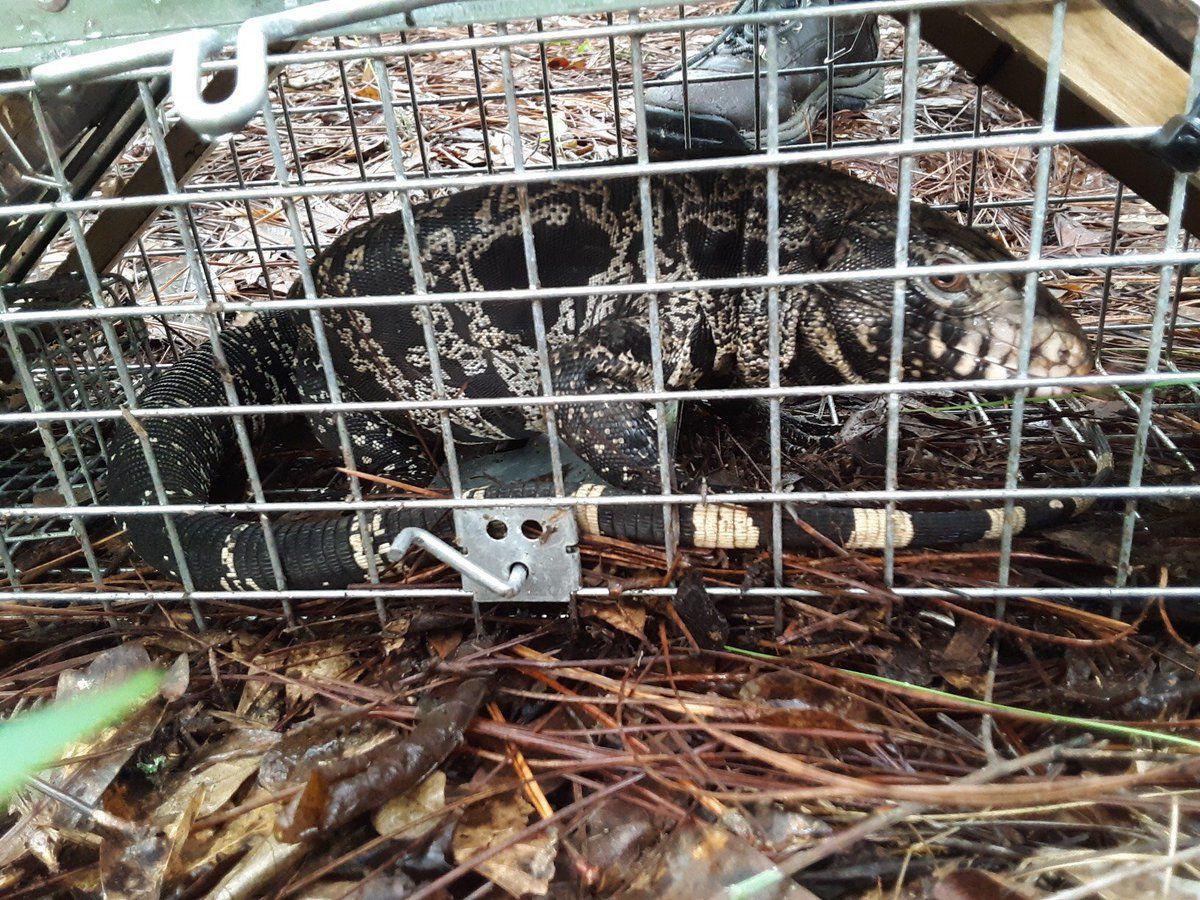Department of Biological Sciences helps target invasive species
August 26, 2019
STATESBORO — Faculty and students at the Georgia Southern University Department of Biological Sciences are helping state and federal agencies target the Tegu lizard, an invasive species in Tattnall and Toombs county.
An invasive species is one that is not native to a specific location and that has a tendency to spread to a degree believed to cause damage to the environment, human economy or human health.
Lance McBrayer, Ph.D., professor of General Biology and Herpetology, graduate student Jada Daniels and undergraduates Michael Brennen and Noah Osterhoudt are involved on the project.
The Tegu lizard has been deemed a threat because they are especially good at hunting and finding eggs, specifically that of the gopher tortoise,which is listed as a vulnerable threatened species, as well as small animals.
“We are worried about losing our already threatened species and they will go and hunt other small animals as well that we should be concerned about,” Brennen said.
The GS team is using several approaches, including posting flyers on ATV trails, social media outreach, with over 70,000 people reached. The second thing they are doing is using chicken eggs to bait the lizards and use a camera to spot the lizards.
{{tncms-inline account=”Julinehermes1″ html=”<blockquote class="twitter-tweet"><p lang="en" dir="ltr">Made a short video tour, clip for a friend, of my Black and white Tegu enclosure. Thought I&#39;d upload here. Why not. Still not sure the point of the Twittersphere yet. <a href="https://twitter.com/hashtag/tegu?src=hash&amp;ref_src=twsrc%5Etfw">#tegu</a> <a href="https://twitter.com/hashtag/reptiles?src=hash&amp;ref_src=twsrc%5Etfw">#reptiles</a> <a href="https://twitter.com/hashtag/Arizona?src=hash&amp;ref_src=twsrc%5Etfw">#Arizona</a> <a href="https://t.co/jZ7d1mxkWw">pic.twitter.com/jZ7d1mxkWw</a></p>&mdash; Julinehermes1 (@julinehermes1) <a href="https://twitter.com/julinehermes1/status/1162142443417919489?ref_src=twsrc%5Etfw">August 15, 2019</a></blockquote>” id=”https://twitter.com/julinehermes1/status/1162142443417919489″ type=”twitter”}}
“We’ll bait a trap and leave it closed, so we don’t catch anything but then have a game camera on that trap so if something comes by and smells it or trips the sensor then we realize they are there,” McBrayer said. “We are going to increase our efforts in that kind of trapping.”
The sightings cover about 150 square miles which are confirmed through sightings on the game cameras. Eyewitness reports have also helped pinpoint the lizards’s exact location. Sightings of the Tegu lizard can be reported at the Georgia Invasives website.
The idea among area officials is that this problem was caused by pet releases and perhaps relocations.
“Most of them this far north are pet releases,” McBrayer said. “Someone was probably raising them in outdoor pens, that was the rumor we have, and then they let them all go.”
Reduction or eradication of the Tegu population in Georgia before more damage is done is the ultimate goal of the program.
The lizard is native to Argentina and Brazil, and it has found a home in Georgia because it is on a similar latitude in the Northern Hemisphere that the lizard’s habitat would be in in the Southern Hemisphere.







